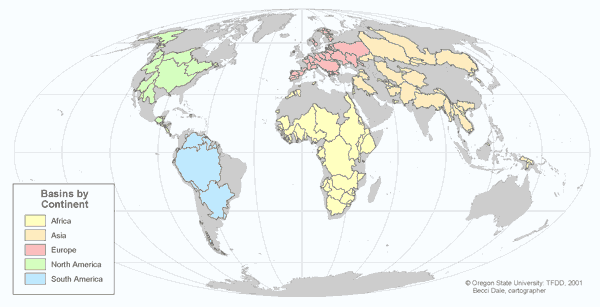by David Steven | Jan 10, 2011 | Climate and resource scarcity, South Asia

On the face of it Pakistan may have bigger things to worry about, but recent weeks have seen it fall out with India over the humble onion:
The pungent vegetable is now at the centre of a mini diplomatic storm that has further soured relations between both countries over the past few days. The Pakistani commerce ministry banned the export of onions across the border by road and rail due to high prices and shortages at home.
Food inflation is running high across South Asia and onion prices are soaring in both Pakistan and India, as the two have had bad harvests of the crop. Reported hoarding and speculation in India have added to the crisis.
Onions are a touchy subject in India and past price hikes have brought down governments. In retaliation, farmers in Indian Punjab have stopped exporting vegetables to Pakistan.
A sideshow, surely, to the really big issues like Kashmir or religious extremism? Maybe not. You can’t spend anytime in Pakistan without noticing the powerful role played by resource scarcity in the country’s politics.
It all goes back to the global food and energy price spike of 2008. According to the IMF, growth had been robust up until that point and government finances were in reasonably good shape.
Conditions deteriorated in mid-2008 with the sharp increase in international food and fuel prices and worsening of the domestic security situation. The fiscal deficit widened, due in large part to rising energy subsidies, financed by credit from the central bank.
As a result, the rupee depreciated and foreign currency reserves fell sharply. Inflation reached 25 percent in mid-2008 [mostly food], causing harm to vulnerable social groups.
The country has never really made it back onto an even keel. The global economic crisis gave Pakistan a little relief, pushing commodity prices sharply lower, but the public finances never recovered.
And as food and energy prices have risen again, Pakistan has been hit by a succession of mini-commodity shocks (the sugar crisis of 2009 and 2010, the flour crisis of 2010). Some estimates suggest that higher food prices have led to a precipitous decline in caloric intake (though robust data is hard to track down).
Gas and electricity are in critically short supply, leading to frequent load shedding, for consumers, business, and industry in winter. Around the major cities, one sees trees being stripped bare by people desperate for heat for their houses and businesses:
Shopkeepers operating in the streets and mohallahs are using pieces of wooden and cardboard crates and other packing material to brace the chill in the air.
Many Lahorites are having ‘bonfires’ even during day time. An empty tin of cooking oil is usually converted into a hearth by making holes in it. Old newspapers, textbooks and copies besides parts of broken furniture are used to make fire as it is hard for many to afford Rs1,200 per 40 kilo fire wood or Rs40-50 per kilo coal.
There are no easy solutions. Pakistan has also been under intense pressure from the IMF and the United States to reduce fuel subsidies, in order to cut its deficit and meet the conditions of its IMF loan.
But its attempts to comply simply fuelled political instability. The PPP-led government came close to falling when it attempted to push up the cost of petrol at the end of 2010. Backing down was the price of getting its junior partner, MQM, back into the coalition late last week.
The result, though, has been unwelcome speculation that Pakistan may on the road to default – a worry that is likely to intensify as oil prices head ever higher.
Inflation is now up to 16%, with food prices expected to rise 20% in December 2010 (year-on-year). In November last year, onions jumped in price by 67% in just one month alone.
As in 2008, many of the drivers of the crisis are regional and global. While the attention of the world is fixated on Pakistan’s struggle with religious extremism. In the background, the struggle for resources seems to be doing as much to push this country towards ruin.
by Alex Evans | Nov 11, 2010 | Articles and Publications, Reports
Center on International Cooperation report by Alex Evans on what forms of multilateral cooperation are needed to manage scarcity of resources like land, food, energy and water (November 2010)
Download Report
by Alex Evans | Oct 6, 2010 | Climate and resource scarcity
Next time you meet a Transition Towner who wants to tell you that everyone should localise food production, ask him / her about what happens to the following countries:
Singapore, Djibouti, Bahrain, Kuwait, Guam, Brunei, US Virgin Islands, French Polynesia, Seychelles, Northern Mariana Islands, Andorra, Maldives, Bermuda, Puerto Rico, Qatar, UAE, St Lucia, Cayman Islands, Trinidad and Tobago, Aruba, Grenada, Malta, Kiribati, Oman, Iceland, Micronesia, Bahamas, Jordan, West Bank & Gaza, American Samoa, Solomon Islands, San Marino, Korea (Rep. of), Japan, Marshall Islands, Lebanon, New Caledonia, Mayotte, Egypt, Papua New Guinea, Netherlands Antilles, Israel, Costa Rica, Colombia, Sri Lanka, Palau
…all of which have 0.0 hectares of arable land per person, when rounded to one decimal place, according to World Bank data. (In fairness, any self-respecting Transitioner will probably argue back that with the latest permaculture techniques, they can feed a family of four on a parcel of land the size of a postage stamp – although see this post for some questions about those claims.)
More data from the same source: in 1960, the world had 0.39 hectares of arable land per capita. In 2007, the figure was 0.21 hectares – this even after the effects of massive deforestation to bring more cropland into production. Only four countries have more than 1 hectare of arable land per person: Niger (1.0), Canada (1.4), Kazakhstan (1.5) and Australia (2.1).
by Alex Evans | Feb 9, 2010 | Climate and resource scarcity
And so to a veritable treasure chest for scarcity nerds everywhere: the Atlas of International Freshwater Agreements, brought to you by Oregon State University’s Program in Water Conflict Management and Transformation.
Here’s what you need to know. First, there are currently 263 rivers that either cross, or demarcate, international boundaries. Europe has most of them (69), followed by Africa (59), Asia (57), North America (40) and South America (38). Here they are on a handy map (larger version at the link above):

Second, you should know that these international river basins account, according to OSU, for nearly one-half of the earth’s land surface; generate roughly 60% of global freshwater flow; and are home to approximately 40% of the world’s population. A taste of the vulnerabilities that come with this:
A total of 145 countries contribute territory to international basins. 33 nations, including such sizeable countries as Bolivia, Chad, the Democratic Republic of the Congo, Niger, and Zambia, have more than 95% of their territory within the hydrologic boundaries of one or more international basins. Perhaps even more significant is the number of countries that share certain individual basins … The Congo, Niger, Nile, Rhine, and Zambezi are each shared by more than 9 countries while the Amazon, Aral Sea, Ganges-Brahmaputra-Meghna, Jordan, Kura-Araks, La Plata, Lake Chad, Mekong, Neman, Tarim, Tigris-Euphrates-Shatt al Arab, Vistula, and Volga basins each contain territory of at least 5 sovereign nations.
Third, the good news. You might think that the quote above suggests that we’re in for a century of water wars. But it’s worth remembering this: “in the largest quantitative study of water conflict and cooperation, researchers at Oregon State University found that cooperative interactions between riparian states over the past fifty years have outnumbered conflictive interactions by more than two-to-one”. Shared water has to date much more often been a stimulus for cooperation than for competition – a point our buddy Geoff Dabelko also makes consistently. This isn’t a new story, either: “the history of international water treaties dates as far back as 2500 bc, when the two Sumerian city-states of Lagash and Umma crafted an agreement ending a water dispute along the Tigris River”.
But… ah yes, there’s a but. And it is this:
158 of the world’s 263 international basins lack any type of cooperative management framework. Furthermore, of the 106 basins with water institutions, approximately two-thirds have three or more riparian states, yet less than 20 percent of the accompanying agreements are multilateral. Moreover, despite the recent progress noted above, treaties with substantive references to water quality management, monitoring and evaluation, conflict resolution, public participation, and flexible allocation methods, remain in the minority. As a result, most existing international water agreements continue to lack the tools necessary to promote long-term, holistic water management
On top of this, there’s the small matter of climate change to consider – and especially, Cleo Paskal’s observation that “water-sharing agreements, especially those based on a set amount of water, rather than percentage of actual flow, will become problematic as water levels alter dramatically” (Cleo has a new book out, btw). So, lots done – but lots to do.
by Alex Evans | Jan 31, 2010 | Climate and resource scarcity, Latin America and the Caribbean
Duncan Green has been perusing ALNAP‘s report on lessons from past experiences of the aftermath of earthquakes, and has summarised some of the key findings. This one was especially interesting:
Land disputes will rise: Land-ownership emerges as a critical issue in all earthquake disasters. First, there are property disputes even before the disaster. Will opportunists seize land in the chaos? Will squatters be able to return and rebuild their shacks (even if that is a good idea)? The loss of documentation, the destruction of landmarks, the deaths of property owners, and the need to formalise previously informal arrangements all add a new layer of complexity to existing land-ownership issues.
But there are positive opportunities too. Some disaster interventions have been effective in changing the pattern of formal house ownership, with new houses registered in the names of both husband and wife. A follow up on the 2001 El Salvador earthquake response, in which the World Bank implemented a joint-ownership policy for new houses, found some communities where 50% of respondents reported that a woman was one of the legal home-owners and that, overall, 37% of the homes were wholly owned by women.
There’s a load of other interesting material on Haiti in other recent posts on Duncan’s blog – e.g. this piece on why humanitarian work is so hard in cities.


